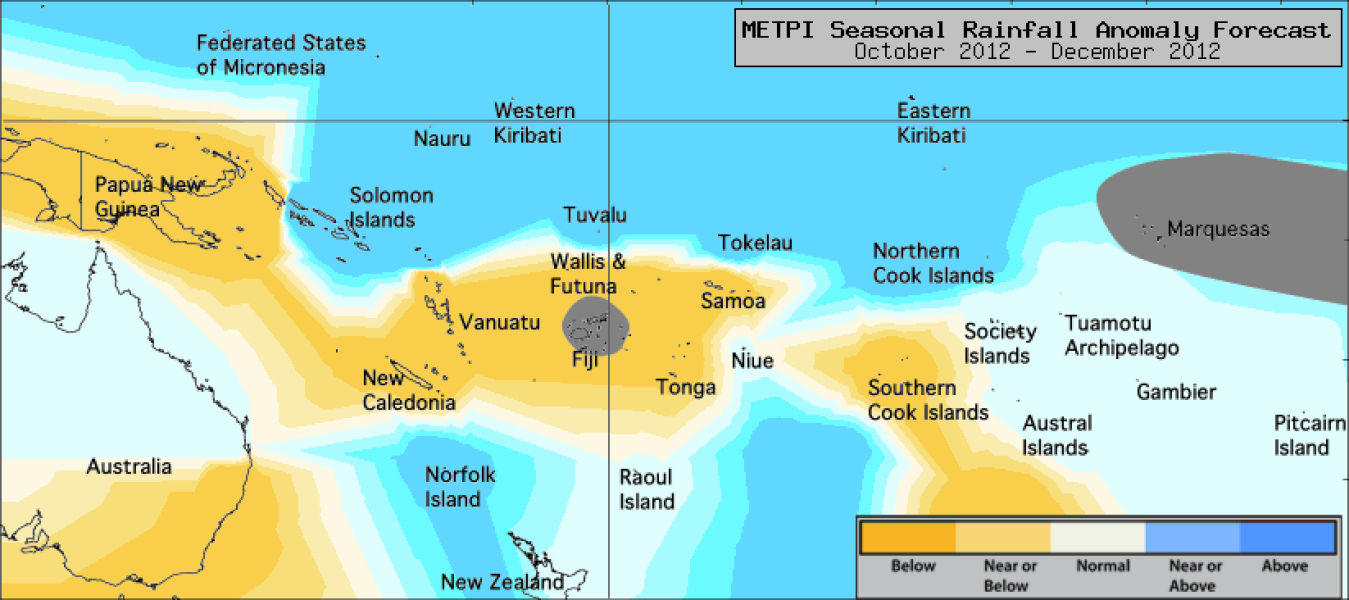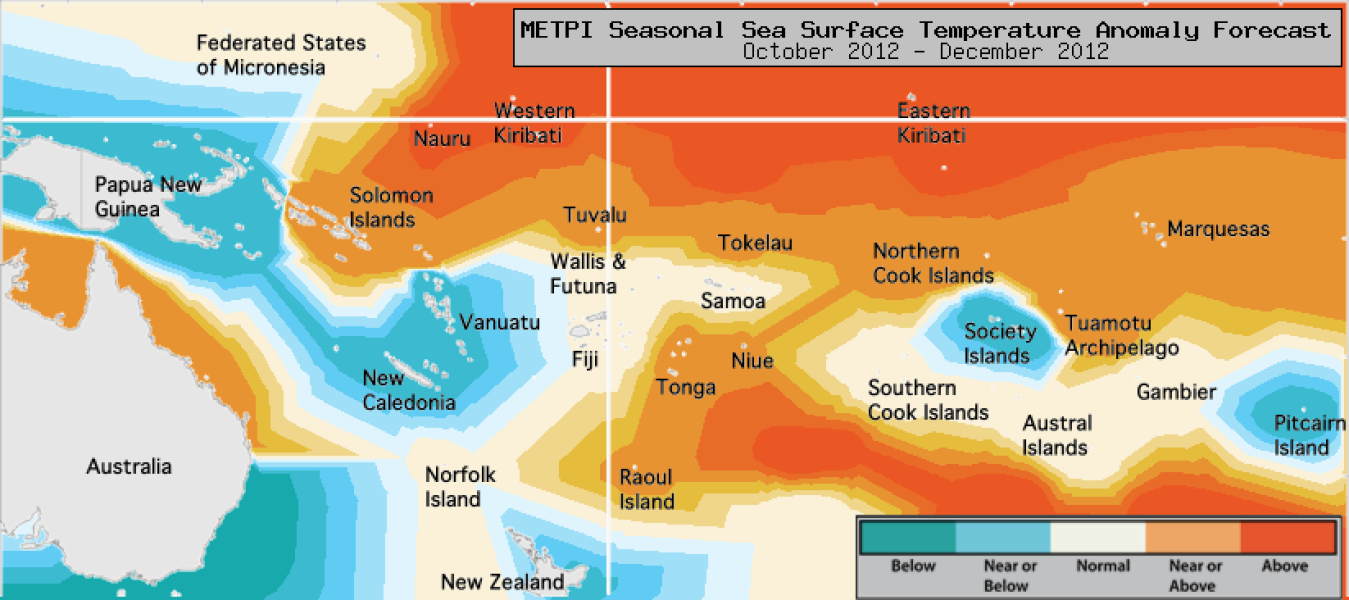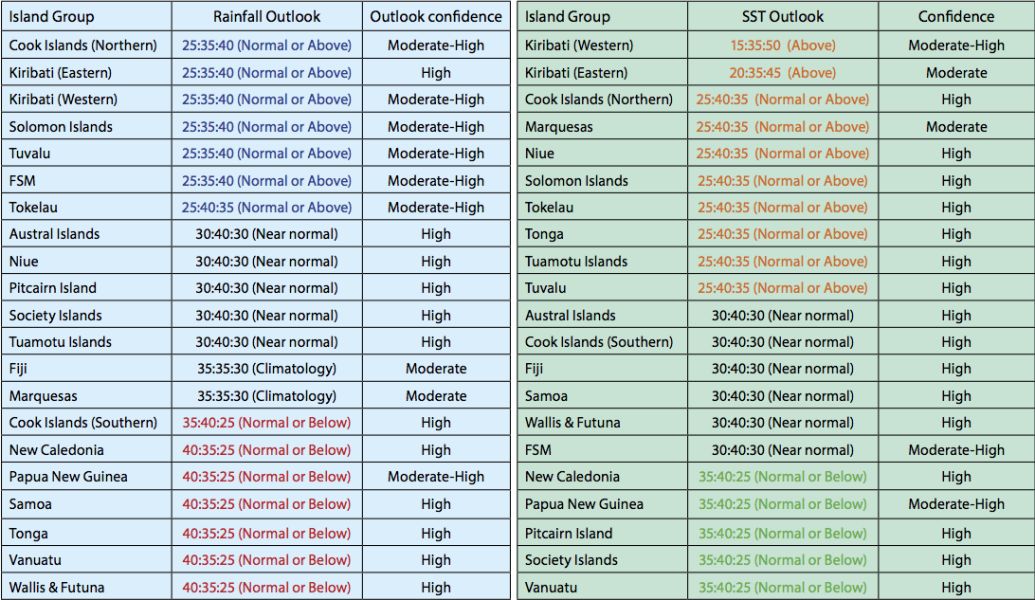The tropical Pacific is close to El Niño thresholds, but the atmosphere is still not showing patterns typical of El Niño.
The dynamical model forecasts for October – December show an ITCZ south of its climatological position east of the Dateline, with a forecast of below normal or normal rainfall over the far western Pacific. The central Pacific south of the Equator is also expected to experience normal or below normal rainfall.
Near or above normal rainfall is forecast for Eastern Kiribati and Western Kiribati, the Northern Cook Islands, the Solomon Islands, Tuvalu, the Federated States of Micronesia and Tokelau.
Near normal rainfall is expected for the Austral Islands, Niue, Pitcairn Island, the Society Islands and the Tuamotu Archipelago.
Normal or below normal rainfall is forecast for the Southern Cook Islands, New Caledonia, Papua New Guinea, Vanuatu, Samoa, Tonga and Wallis & Futuna. No clear guidance is given for Fiji and the Marquesas.
The global model ensemble continues to show development of weak El Niño – like SST signals, with an indication of warm anomalies in the equatorial region, especially to the east of the Dateline in the coming three months.
Normal or below normal SSTs are forecast for Papua New Guinea, New Caledonia, Vanuatu, the Society Islands and Pitcairn Island.
Above normal SSTs are forecast for Eastern Kiribati and Western Kiribati. Near normal or above normal sea surface temperatures are forecast for the Solomon Islands, Tuvalu, Tokelau, Niue, Tonga, the Northern Cook Islands, the Marquesas and the Tuamotu Archipelago. Near normal SSTs are forecast elsewhere.
The confidence for the rainfall outlook is moderate to high. The average region–wide hit rate for rainfall forecasts issued in October is 66%, three points higher than the long–term average for all months combined.
The SST forecast confidence is moderate to high across the region, and uncertainty is greatest near the Federated States of Micronesia and Papua New Guinea as well as along the Equator and near the Marquesas.



